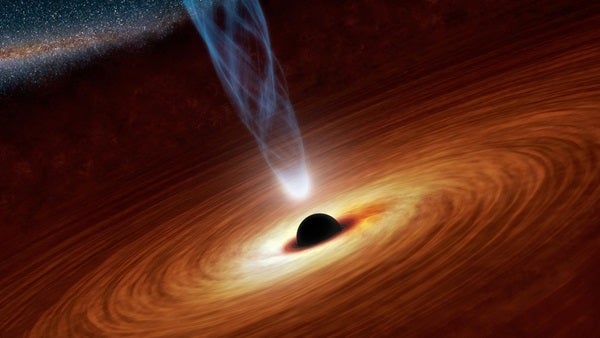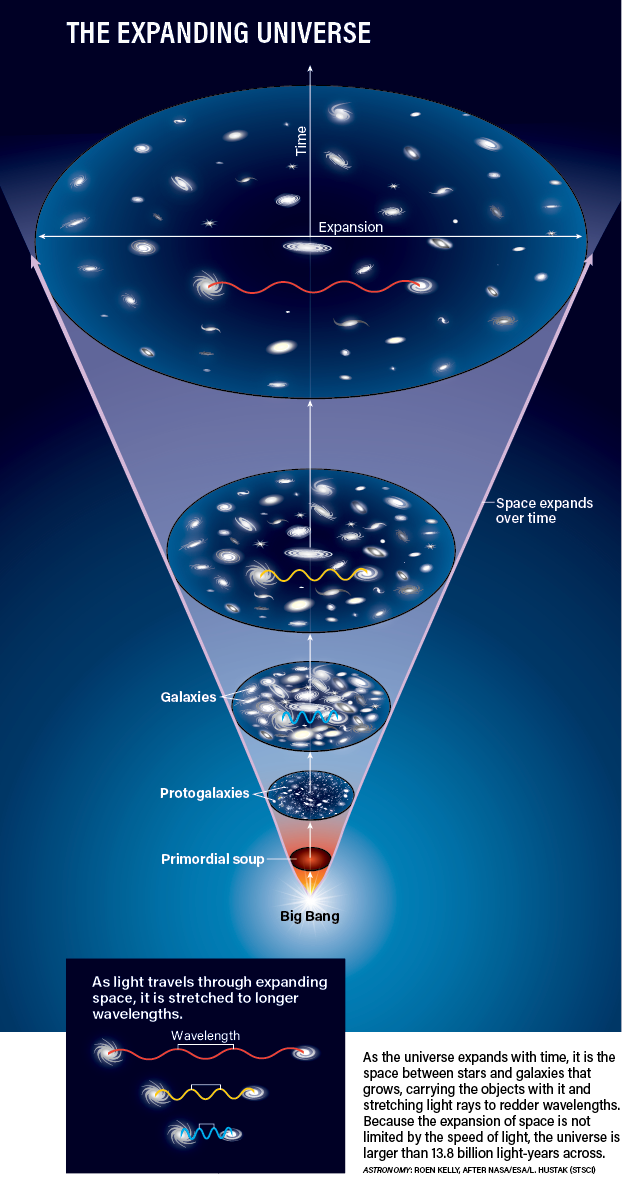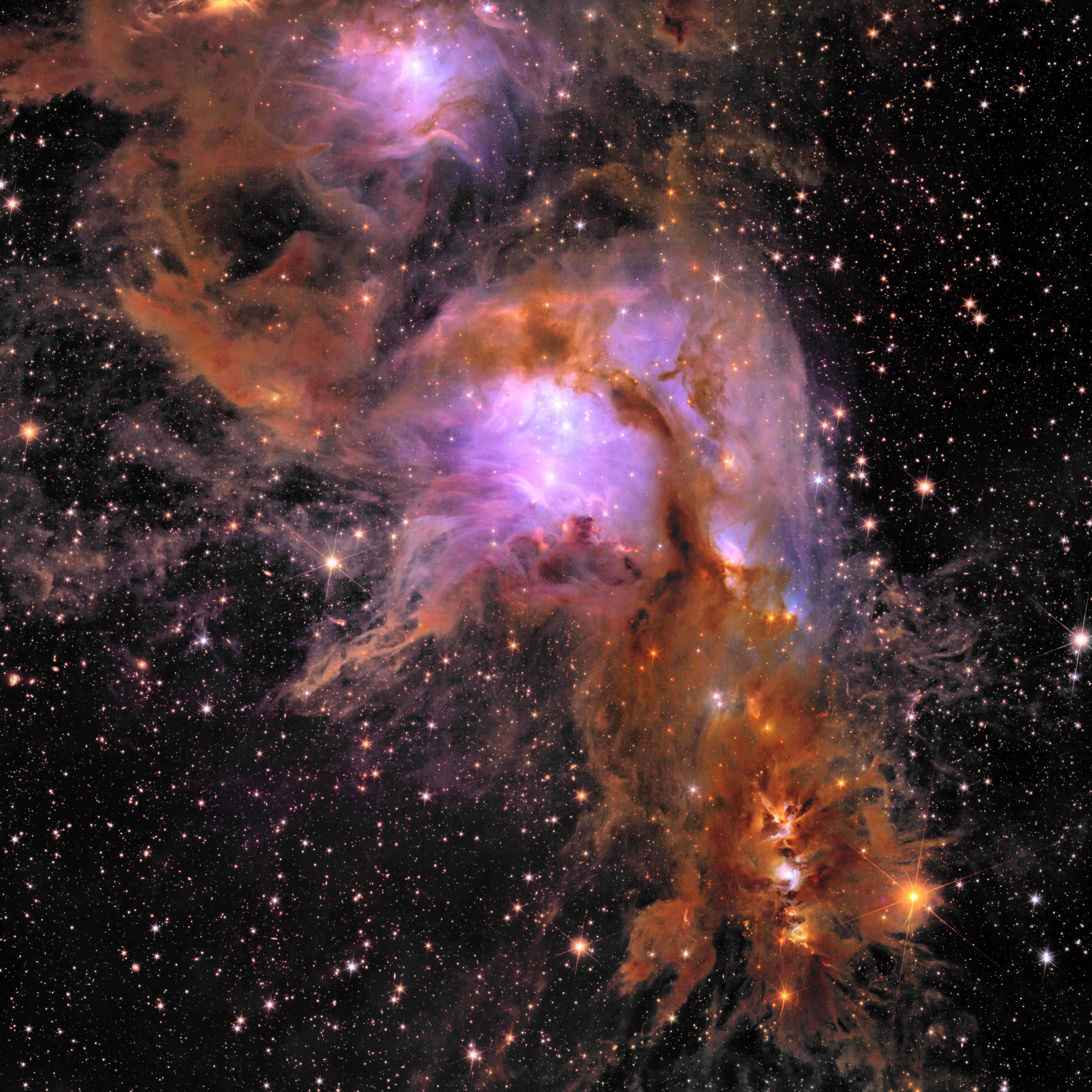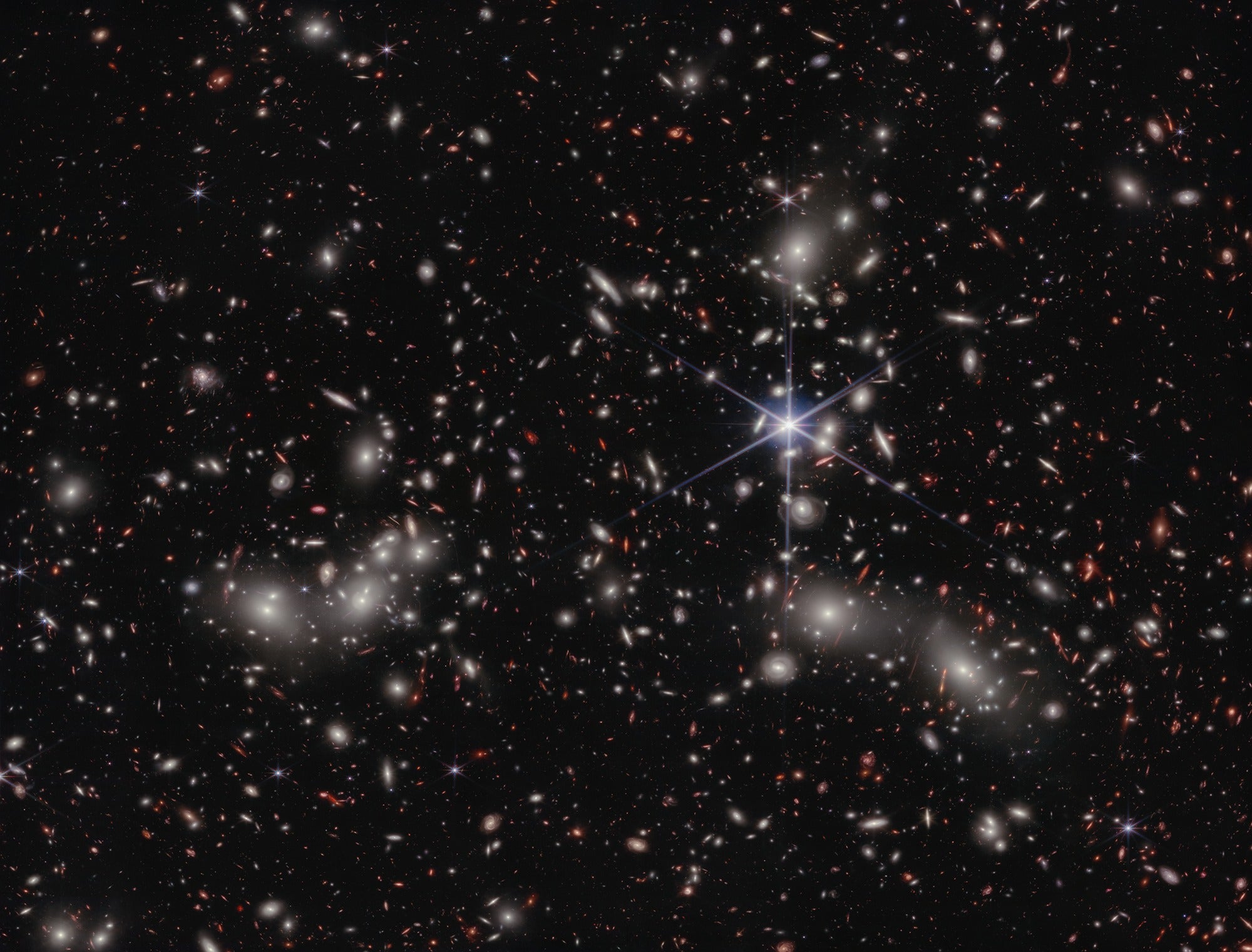All known black holes formed from stars at the end of their lives, so the mass in these black holes came originally from atoms. Thus, the amount of mass in ordinary black holes is tiny, and these objects cannot be a significant part of dark matter.
In the early 1970s, however, Stephen Hawking proposed that black holes could form from radiation in the extremely early universe, just after the Big Bang, when too much energy gets within a certain small volume that has a radius called the “Schwarzschild radius.” Because these primordial black holes (PBHs) formed from radiation, they are not made of atoms. Thus, PBHs could make up all, or a portion of, dark matter. There is no strong reason, however, to believe that these PBHs should have formed, so they may not exist — but it is a possibility.
Many experiments have looked for these PBHs, but they haven’t found any, and many of the possible mass ranges have been ruled out. However, if all PBHs have masses less than a tenth of the Moon’s mass, then these objects are still a possible dark-matter candidate.
University of California, San Diego










